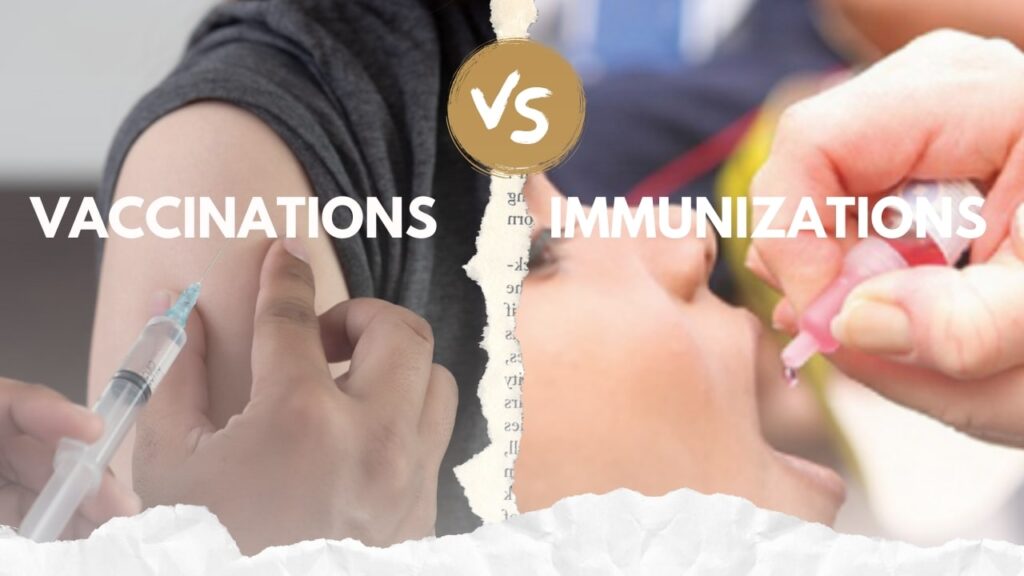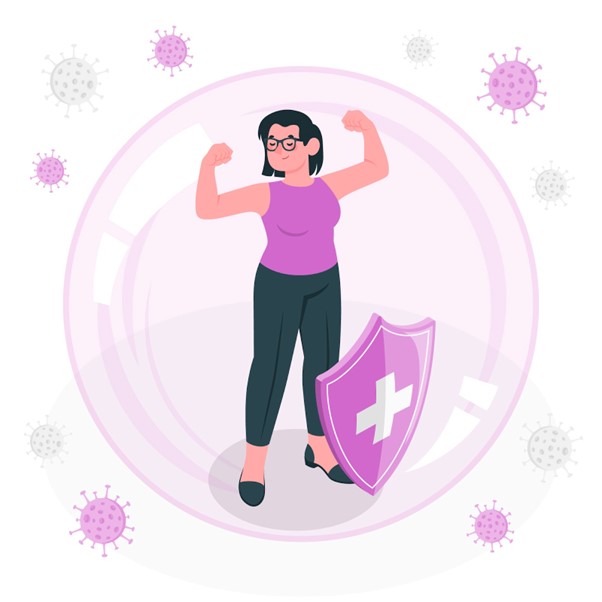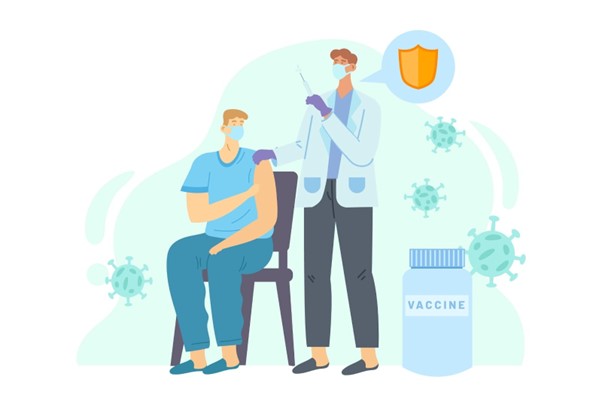Last updated on May 20th, 2025 at 05:28 pm
 Difference between Vaccinations and Immunizations: Understanding the distinction between vaccinations and immunizations is crucial for grasping their roles in public health. Although often used interchangeably, these terms represent different concepts. Vaccination refers to the act of introducing a vaccine into the body to produce immunity to a specific disease. Immunization, on the other hand, is the process by which an individual becomes protected against a disease, often through vaccination. Recognizing these differences is vital for public health, education, and clear communication about disease prevention strategies.
Difference between Vaccinations and Immunizations: Understanding the distinction between vaccinations and immunizations is crucial for grasping their roles in public health. Although often used interchangeably, these terms represent different concepts. Vaccination refers to the act of introducing a vaccine into the body to produce immunity to a specific disease. Immunization, on the other hand, is the process by which an individual becomes protected against a disease, often through vaccination. Recognizing these differences is vital for public health, education, and clear communication about disease prevention strategies.
The Concept of Vaccination
The concept of vaccination dates back to Edward Jenner’s pioneering work in the late 18th century. Jenner developed the first smallpox vaccine using material from cowpox sores, laying the foundation for modern vaccine development. Since then, vaccines have evolved significantly, leading to the eradication or control of numerous infectious diseases.

How Vaccinations Work
Vaccinations are a cornerstone of modern medicine, playing a crucial role in the prevention and control of infectious diseases. Understanding how vaccinations work involves delving into the biological mechanisms that enable the immune system to recognize and combat pathogens effectively. This process hinges on the introduction of antigens into the body and the subsequent immune response.
Types of Vaccines in vaccinations
Vaccines come in various forms, each using different methods to safely introduce antigens and stimulate immunity. The main types include:
-
Live-Attenuated Vaccines
These vaccines contain a weakened form of the live virus or bacteria that cannot cause disease in healthy individuals. Examples include the measles, mumps, and rubella (MMR) vaccine, and the varicella (chickenpox) vaccine. Because they closely mimic a natural infection, they typically provide strong and long-lasting immunity with just one or two doses.
-
Inactivated Vaccines
In these vaccines, the virus or bacteria is killed or inactivated so it cannot cause disease. Examples include the polio vaccine and the hepatitis A vaccine. Multiple doses may be necessary to achieve and maintain immunity.
-
Subunit, Recombinant, Conjugate, and Polysaccharide Vaccines
These vaccines use specific pieces of the germ (like its protein, sugar, or capsid) to provoke an immune response. Examples include the human papillomavirus (HPV) vaccine and the meningococcal vaccine. They are less likely to cause side effects and are often effective with fewer doses.
-
mRNA Vaccines
These vaccines use messenger RNA to instruct cells to produce a protein that triggers an immune response. The mRNA from the vaccine does not stay in the body but is broken down after the protein is made. Examples of this include the COVID-19 vaccines developed by Pfizer-BioNTech and Moderna. These vaccines are a newer technology that has proven highly effective in preventing disease.
Immune System Response
Once the vaccine introduces antigens into the body, the immune system responds in several stages:
-
Antigen Presentation
Antigen-presenting cells (APCs), such as dendritic cells, engulf the vaccine’s antigens and display fragments of them on their surface.
-
Activation of Helper T Cells
The APCs then travel to the lymph nodes, where they present the antigen fragments to helper T cells. These cells play a crucial role in orchestrating the immune response by activating other immune cells.
-
B Cell Activation and Antibody Production
Helper T cells activate B cells, which then differentiate into plasma cells that produce antibodies. These antibodies are specific to the antigen and can neutralize the pathogen if encountered again.
-
Formation of Memory Cells
Some B and T cells become memory cells, which remain in the body long after the initial infection has been cleared. These cells “remember” the pathogen and can mount a rapid and robust response if the body is exposed to the same pathogen in the future.
Administration of Vaccines
Vaccines are administered through various methods to ensure they effectively stimulate the immune system:
- Injection: Most common, administered intramuscularly, subcutaneously, or intradermally.
- Oral: Some vaccines, like the rotavirus vaccine, are given orally.
- Nasal Spray: The live attenuated influenza vaccine (LAIV) is an example of a vaccine administered via nasal spray.

Examples of Common Vaccines
MMR (Measles, Mumps, Rubella): A combination vaccine protecting against three diseases.
Influenza: An annual vaccine adapting to prevalent flu strains.
COVID-19 vaccines: Recent mRNA vaccines have shown significant efficacy in preventing severe illness.
The Process of Immunization
Natural Immunization
Immunity can be acquired through natural infection, where the body fights off the pathogen and develops memory cells. There are two types of natural immunity:
- Active immunity: Developed after recovering from an infection.
- Passive immunity: Acquired through antibodies passed from mother to child or through antibody-containing blood products.
Induced Immunization via Vaccination
Vaccines stimulate the immune system to produce memory cells without causing the disease itself. This process mimics natural infection and prepares the immune system to respond more effectively if exposed to the pathogen in the future.
Examples of Immunization Outcomes
Herd immunity: When a significant portion of the population is immune, reducing the spread of disease.
Reduction in disease prevalence: Successful immunization programs have led to a significant decrease in diseases like polio and measles.
Differences Between Vaccination And Immunization
| Aspect | Vaccination | Immunization |
| Definition | The act of introducing a vaccine into the body to produce immunity to a specific disease. | The process by which an individual becomes protected against a disease, often through vaccination. |
| Process | Involves administering a substance (vaccine) that contains antigens to stimulate the immune system. | Involves the body’s development of immunity either through vaccination or natural infection. |
| Purpose | To expose the body to antigens in a controlled manner to stimulate an immune response without causing disease. | To develop immunity and protection against a specific disease, resulting in the body’s ability to fight off infection. |
| Components | Vaccines can contain live-attenuated, inactivated, subunit, conjugate, or mRNA components. | Immunity involves the production of antibodies and memory cells that recognize and combat pathogens. |
| Outcome | A step towards achieving immunization by preparing the immune system to recognize and fight the pathogen. | The end result where the individual has developed the capability to resist or fight the disease. |
| Example | Receiving the MMR (measles, mumps, rubella) vaccine. | Developing immunity to measles after vaccination or recovering from measles infection. |
| Failure Scenarios | Vaccination may not always lead to immunization if the vaccine is not effective or the individual is immunocompromised. | Immunization may not be achieved if the immune response is inadequate or if boosters are not administered as needed. |
| Duration | The act of vaccination is immediate, occurring at the time of administration. | Immunization can be long-term or lifelong, depending on the disease and type of vaccine. |
| Examples of Administration | Injection, oral, nasal spray. | Immunization occurs internally as the body responds to the vaccine or natural infection. |
| Significance | A critical public health measure to initiate the process of immunity. | The ultimate goal of vaccination and natural infection processes, leading to reduced disease prevalence. |
Conclusion
Understanding the distinction between vaccination and immunization is crucial for effective disease prevention. Both play vital roles in public health by reducing disease prevalence and enhancing community protection. Supporting vaccination and immunization efforts is essential for global health. Public education and policy support are necessary to overcome challenges and ensure the continued success of immunization programs. By clearly distinguishing between vaccinations and immunizations, we can better appreciate their individual contributions to public health and work towards a healthier future for all.
FAQs on Differences Between Vaccination And Immunization
1. What is the difference between vaccination and immunization?
Answer: Vaccination is the act of administering a vaccine to stimulate the body’s immune system to produce immunity to a specific disease. Immunization refers to the process by which an individual becomes protected against a disease, often as a result of vaccination. While vaccination is the method, immunization is the desired outcome of that method.
2. Can someone be immunized without vaccination?
Answer: Yes, immunization can occur naturally through infection when the body successfully fights off a pathogen and develops immunity. However, vaccination is a safer and controlled way to achieve immunization without the risk of contracting the actual disease, which can have severe health consequences.
3. Why might a vaccination not result in immunization?
Answer: A vaccination might not result in immunization due to factors like improper storage or handling of the vaccine, individual variations in immune response, or an immunocompromised status. Additionally, some vaccines require multiple doses or boosters to achieve and maintain effective immunity.
Also Read:- Are generic available in vaccines? Types of vaccines